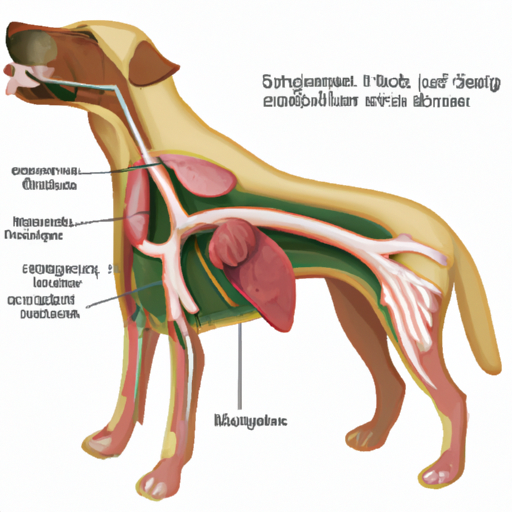Understanding your dog’s anatomy can be a key aspect in ensuring their overall health, and a vital part of that anatomy is the respiratory system. When you think about your dog’s respiratory system, a crucial component is their lungs. But where exactly are a dog’s lungs located? In this article, we will answer that question and delve deeper into the role and function of your dog’s lungs.
- The location and structure of a dog’s lungs
- How a dog’s lungs function
- Common health issues related to a dog’s lungs
- Ways to maintain your dog’s lung health
The Location and Structure of a Dog’s Lungs
A dog’s lungs are located in the chest cavity, also known as the thorax, and are protected by the ribcage. They are positioned on either side of the heart, which is nestled between them. The lungs are divided into lobes, with the right lung having four lobes and the left lung having two. This division into lobes increases the lungs’ efficiency in oxygenating the blood.
How a Dog’s Lungs Function
The primary function of a dog’s lungs is to oxygenate the blood. When your dog inhales, air enters the body through the nose or mouth, travels down the trachea, splits into two bronchi (one for each lung), and finally ends up in the tiny air sacs called alveoli. It is in these alveoli where oxygen is exchanged for carbon dioxide, which your dog then exhales.
It’s important to note that dogs, unlike humans, don’t sweat to regulate their body temperature. Instead, they pant. As they pant, air passes over the moist surfaces of their lungs, cooling them down. Thus, a dog’s lungs play a key role in their ability to maintain a healthy body temperature.
Common Health Issues Related to a Dog’s Lungs
Various health issues can affect a dog’s lungs. These include infectious diseases like kennel cough or canine influenza, heartworm disease, and chronic conditions like bronchitis or asthma. Dogs can also develop lung cancer, though it’s not as common as in humans.
Early detection of lung-related health issues in dogs can often lead to more effective treatment. Therefore, it’s essential to be aware of any changes in your dog’s breathing or behavior that might indicate a problem with their lungs.
Ways to Maintain Your Dog’s Lung Health
Maintaining your dog’s lung health is crucial for their overall well-being. Here are some ways you can help keep your dog’s lungs healthy:
- Regular Exercise: Just like in humans, regular exercise can help maintain lung function in dogs.
- Prevent Exposure to Smoke and Other Air Pollutants: Dogs, especially those with pre-existing respiratory issues, can be sensitive to smoke and air pollutants. Avoid exposing your dog to these elements when possible.
- Regular Vet Check-ups: Regular check-ups can help catch any potential lung issues early.
Understanding where your dog’s lungs are located and how they function is essential for any dog owner. By being aware of this information, you can better maintain your dog’s health and well-being.
Frequently Asked Questions
Where exactly are a dog’s lungs located?
A dog’s lungs are located in the chest cavity, also known as the thorax, and are protected by the ribcage. They are situated on either side of the heart.
What is the function of a dog’s lungs?
The primary function of a dog’s lungs is to oxygenate the blood. Additionally, they play a key role in helping dogs regulate their body temperature.
What are some common health issues related to a dog’s lungs?
Some common health issues that can affect a dog’s lungs include infectious diseases like kennel cough or canine influenza, heartworm disease, and chronic conditions like bronchitis or asthma. Dogs can also develop lung cancer, though it’s not as common as in humans.
How can I maintain my dog’s lung health?
Regular exercise, preventing exposure to smoke and other air pollutants, and regular vet check-ups can all contribute to maintaining your dog’s lung health.
Sources and Further Reading
For more information on canine anatomy and health, check out these resources:
Whether you’re a new dog owner or a seasoned pet parent, understanding where your dog’s lungs are and how they function can help you take better care of your furry friend. After all, a healthy dog is a happy dog!



